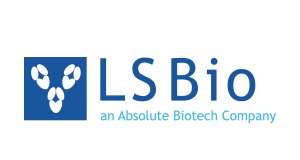Mouse Soluble RANK Ligand (sRANKL) Protein (Recombinant)
Mouse Soluble RANK Ligand (sRANKL) Protein (Recombinant)
SKU
LIFLS-G133823-2
Packaging Unit
2 µg
Manufacturer
LSBio
Availability:
loading...
Price is loading...
Description: RANKL and RANK are members of the TNF superfamily of ligands and receptors that play an important role in the regulation of specific immunity and bone turnover. RANK (receptor) was originally identified as a dendritic cell-membrane protein, which, by interacting with RANKL, augments the ability of dendritic cells. These dendritic cells then stimulate naïve T-cell proliferation in a mixed lymphocyte reaction, promote the survival of RANK + T-cells, and regulate T-cell-dependent immune response. RANKL, which is expressed in a variety of cells, including osteoblasts, fibroblasts, activated T-cells and bone marrow stromal cells, is also capable of interacting with a decoy receptor called OPG. Binding of soluble OPG to sRANKL inhibits osteoclastogenesis by interrupting the signaling between stromal cells and osteoclastic progenitor cells, thereby leading to excess accumulation of bone and cartilage. Recombinant Murine sRANK Ligand is a 19.8 kDa polypeptide comprising the TNF-homologous region of RANKL (178 amino acid residues).
Presentation: Lyophilized from 0.2 um sterile-filtered solution in 10mM sodium phosphate, 75mM sodium chloride, pH 7.5.
Protein Type: Recombinant
Reconstitution Instructions: Centrifuge the vial prior to opening. Reconstitute in water to a concentration of 0.1-1.0 mg/ml. Do not vortex. For extended storage it is recommended to further dilute in a buffer containing a carrier protein (example 0.1% BSA) and store in working aliquots at -20°C to -80°C.
Purification: Greater than 95% by SDS-PAGE gel and HPLC analyses.
Predicted Molecular Weight: 22.1 kDa
Presentation: Lyophilized from 0.2 um sterile-filtered solution in 10mM sodium phosphate, 75mM sodium chloride, pH 7.5.
Protein Type: Recombinant
Reconstitution Instructions: Centrifuge the vial prior to opening. Reconstitute in water to a concentration of 0.1-1.0 mg/ml. Do not vortex. For extended storage it is recommended to further dilute in a buffer containing a carrier protein (example 0.1% BSA) and store in working aliquots at -20°C to -80°C.
Purification: Greater than 95% by SDS-PAGE gel and HPLC analyses.
Predicted Molecular Weight: 22.1 kDa
| SKU | LIFLS-G133823-2 |
|---|---|
| Manufacturer | LSBio |
| Manufacturer SKU | LS-G133823-2 |
| Package Unit | 2 µg |
| Quantity Unit | STK |
| Reactivity | Mouse (Murine) |
| Host | Hamster |
| Product information (PDF) |
|
| MSDS (PDF) |
|

 Deutsch
Deutsch







